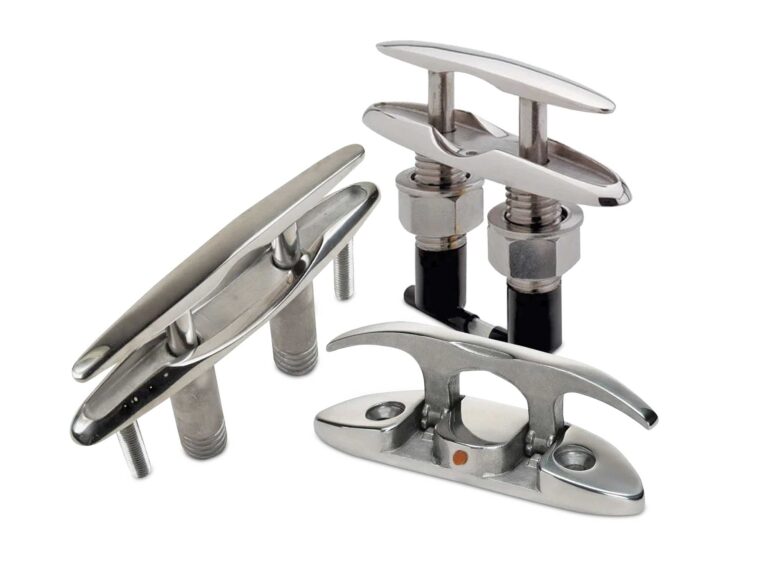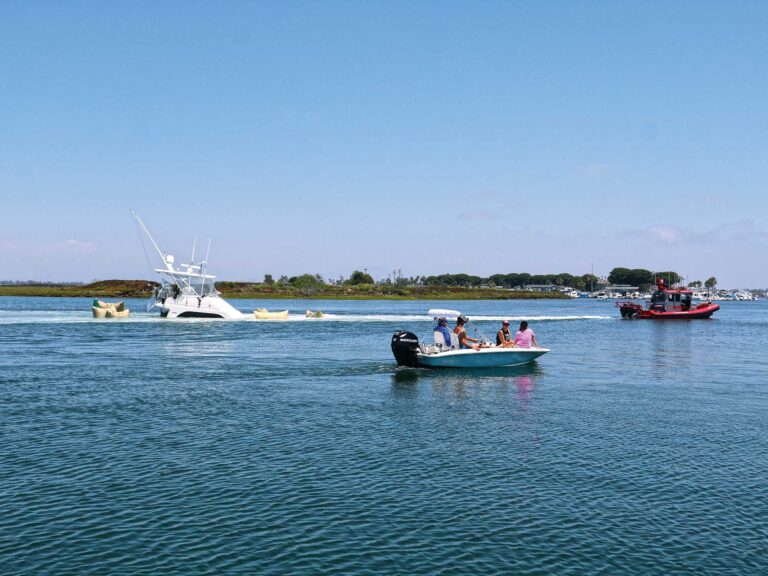The boats that turn heads at the marina always seem to have that rich, oh-so-expensive gel coated look. You walk by, catch the owner’s eye, and nod knowingly that such dockside appeal can’t be achieved without forking over some serious green. But if you want a classy look for your boat and aren’t willing to pay thousands of dollars for a custom gel coat color, you can paint it yourself for a couple hundred bucks and two weekends’ worth of time. You don’t need a spray gun or any special equipment. All you need is a buddy, some paint, and some free time. To prove that professional results can be achieved in your garage or driveway, we painted a 19′ Mako with Interlux’s Toplac, a one-part, brushable paint ($40/qt.; www.interlux.com). This lush green paint made an already good-looking boat a real head turner. Here’s what you need to do the job.
JOB SITE: First, you’ll need to select a location for your project. You can paint outside, but be careful of windy days. If your garage is big enough, you’re better off inside. I rented a barn at a local boatyard for $100. Indoors or out, do not paint when humidity is above 80 percent or Toplac will lose gloss.
WAX OFF: Before you start painting, you have to prep your boat. Wipe the hull down with a rag soaked in Interlux Fiberglass Solvent Wash 202 ($16/qt.) to remove any wax. Turn the rag frequently so you don’t inadvertently reapply the removed wax.
THE NITTY-GRITTY: Don’t touch that paint yet. You need to sand the hull with 220-grit sandpaper and then mask off areas you’re not painting using 3M Long Mask-the blue tape. We left Long Mask on for more than a week and had no problem removing it. Fittings and hardware (rubrail, through-hulls, and so forth) can be removed, prior to masking, if you’re ambitious and want the best result.
PRIME CUT: Ready to start? Don’t get anxious. You need to do one more thing first. Apply a coat of Pre-Kote primer ($27/qt.) to the entire surface area you plan to paint. Allow this to dry overnight, then sand with 400-grit sandpaper before painting.
APPLY YOURSELF: Okay, now you can break out the Toplac. But painting a hull requires a more refined technique than the up-and-down brush strokes you used in your living room. The method of application you need to master is called roller tipping. Working with a partner, one guy applies the paint to the boat with a foam roller. The other guy follows with a high-quality badger bristle brush to “tip off” the stipple and bubbles. Before you start on your boat, practice this technique on a scrap of Plexiglas or Masonite, both of which adhere to paint much like gel-coated fiberglass. When you’re satisfied with your roller tipping results, tackle the boat.
LEVEL WITH IT: Toplac has excellent self-leveling qualities-brush marks tend to flow out by themselves. But along with technique, the right quantity of thinner (Interlux 333, $14/qt.), makes its leveling properties shine. Again, use your practice board to be sure you get the thinner ratio right.
COLOR TIME: Apply at least two coats of Toplac. Allow the hull to dry overnight between coats. Because changes in humidity and temperature will affect the ratio of the thinner, use a paper bucket to mix just enough paint and thinner for one coat. Expect about 100 square feet of coverage per can. We used a quart-and-a-half to paint our 19-footer.
THE VERDICT: It cost us two weekends and only $488 for the whole job, not including the barn rental. That’s cheap, especially when you consider the whispers of “nice boat” it gets with its new green suit.









